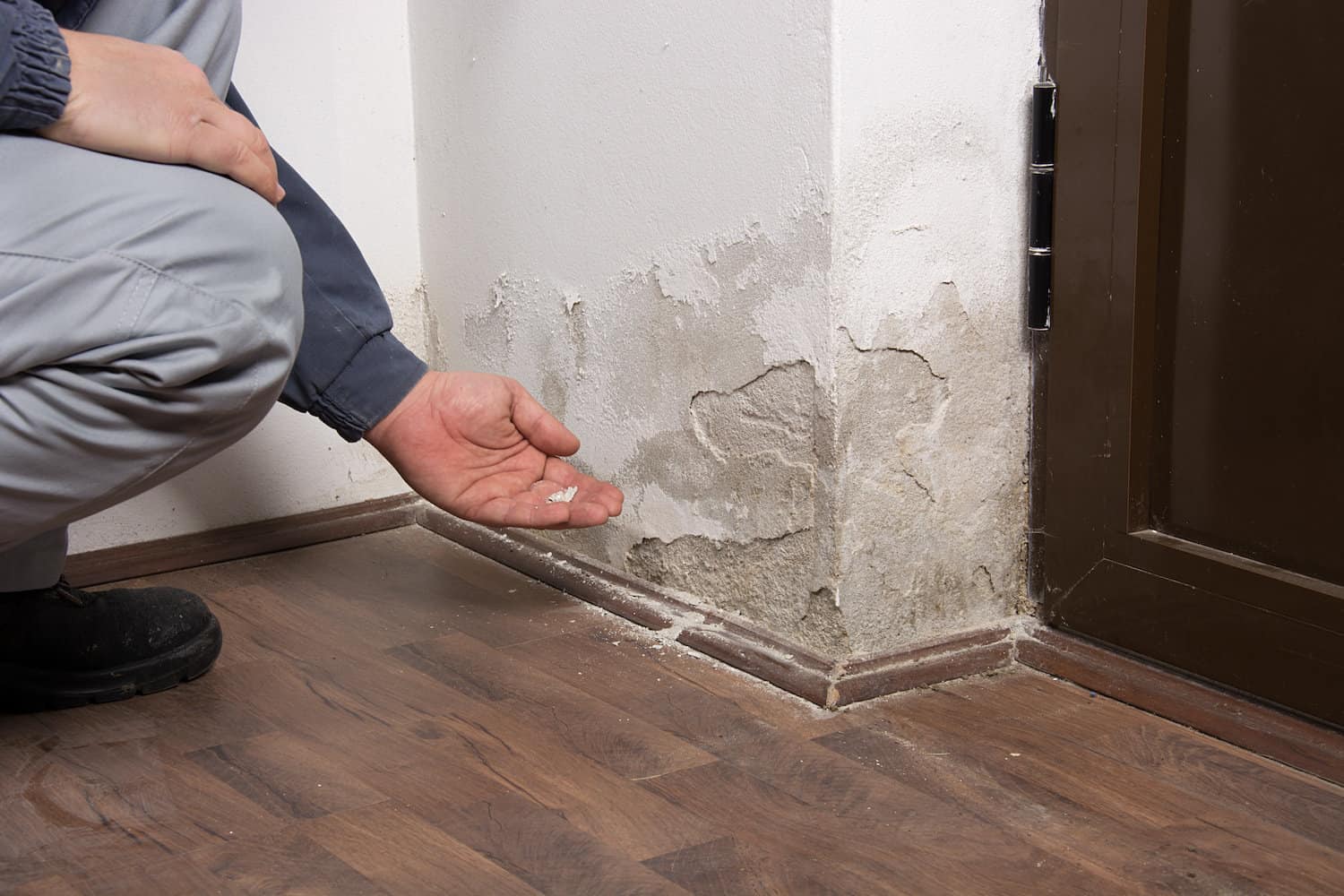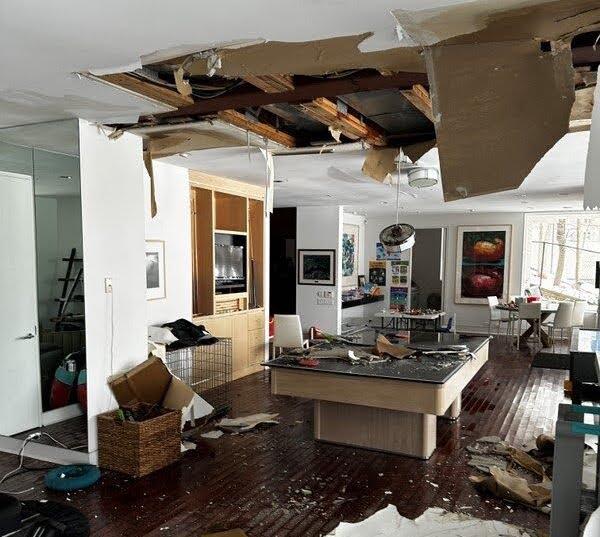Water Mitigation Company with Proven Track Record of Success in Restoration
The Process of Water Damages Cleanup: Guaranteeing Your Home Is Restored Effectively
Water damages can be a difficult obstacle for homeowners, demanding a organized and careful cleaning process to restore safety and security and functionality. Initially, a thorough analysis is crucial to identify the level of the damages and establish the ideal removal actions. Following this, efficient water removal techniques play a critical role in alleviating additional harm. However, the subtleties of drying out, sanitizing, and eventual remediation are equally important and frequently neglected. Recognizing these stages can make a considerable difference in the end result of your home's repair, motivating a closer take a look at what each action requires.
Examining the Damages
Upon discovering water damage, the initial step is to thoroughly evaluate the extent of the effect. This first evaluation is vital, as it aids establish the necessary actions for efficient cleanup and reconstruction. Begin by inspecting the influenced areas, including walls, ceilings, floorings, and individual valuables, to recognize the resource of the water invasion, whether from flooding, leaks, or condensation.
Documenting the damages is vital for both insurance policy claims and preparing repair initiatives - damage restoration services. Usage photos and created notes to catch the intensity of the damage, noting any type of damaged structural components and products. Pay special attention to locations that might not be immediately visible, such as behind walls and under carpetings, as concealed wetness can cause additional complications, including mold and mildew growth
In addition, examine the timeline of the water exposure. The longer the materials remain damp, the greater the capacity for damages. Understanding the period of exposure will notify the urgency of remediation initiatives. Ultimately, a comprehensive analysis prepares for an effective water damage cleanup procedure, making sure that all influenced locations are dealt with efficiently and extensively.
Water Extraction Methods

Specialists usually employ submersible pumps for bigger quantities of water, which can rapidly alleviate flooding in basements or other impacted areas. For smaller sized amounts, wet/dry vacuums are commonly used to draw out residual wetness from carpetings and hard surfaces. Furthermore, making use of portable extractors permits targeted removal in constrained rooms or locations with delicate materials.
In instances of infected water, such as sewage or floodwater, progressed removal methods may involve the use of biohazard equipment to ensure safety and security and compliance with wellness laws. High-powered extraction tools are vital in lessening water retention in architectural materials, which can cause mold and mildew development and structural wear and tear if not attended to without delay.
Inevitably, the efficiency of water removal techniques plays a pivotal function in the general success of the water damages cleanup procedure, laying the foundation for succeeding restoration efforts.
Drying and Dehumidification
Once standing water has actually been successfully drawn out, the next critical phase in the water damage cleaning procedure is drying and dehumidification. This action is crucial to avoid further damage and mold and mildew development, which can occur within 24 to 48 hours in moist settings.
To accomplish reliable drying, specialized equipment such as industrial-grade air moving companies and dehumidifiers is employed. Air movers circulate air across wet surfaces, enhancing dissipation rates, while dehumidifiers minimize moisture degrees in the air, advertising check my source a helpful environment for drying out. The combination of these devices ensures that wetness is attracted out from home furnishings, floors, and wall surfaces, enabling them to i thought about this completely dry thoroughly.
It is important to keep an eye on the drying out procedure very closely. Experts usually utilize dampness meters to evaluate the dampness content in different materials, ensuring that all affected areas reach acceptable dryness degrees. This thorough strategy helps to stop hidden dampness pockets that can result in architectural damages or harmful mold development.

Cleaning and Sanitizing
After the drying and dehumidification stage is total, the following important action in water damage clean-up is cleaning up and disinfecting the influenced locations. This procedure is essential to avoid the development of mold and mildew, microorganisms, and other pathogens that flourish in moist environments.
The cleaning phase typically entails getting rid of any kind of debris, dirt, and pollutants from surfaces making use of specialized cleaning up agents. For hard surface areas, a mix of soap and water or commercial cleaning items is often employed. Soft products, such as upholstery and rugs, may require a lot more considerable cleaning approaches, consisting of heavy steam cleaning or deep removal methods, to ensure extensive cleanliness.

Sanitizing look at here complies with cleaning, making use of EPA-approved disinfectants to eliminate unsafe bacteria. This action is essential, especially in locations that might have entered call with floodwaters or sewer, as these resources can pose major wellness dangers.
Furthermore, it is essential to address any staying odors, which might call for the use of smell neutralizers or advanced strategies like ozone therapy. Proper cleansing and sterilizing not just bring back the safety and security and health of your home but additionally lay the foundation for successful restoration and fixings in succeeding stages of the water damages cleaning process.
Remediation and Fixings
.jpg)
When the analysis is total, restoration efforts can start. This normally involves fixing or replacing broken products, making sure that all job follows neighborhood building ordinance and criteria. As an example, if drywall has been endangered, it will need to be removed and replaced with brand-new material. Furthermore, flooring might require comparable focus, depending on the degree of water direct exposure.
It is vital to engage knowledgeable restoration experts during this process, as they possess the competence to manage complicated repair services effectively. In addition, they can aid mitigate prospective future issues, such as mold and mildew growth or architectural instability, hence ensuring a risk-free and habitable living setting. Eventually, effective repair and fixings bring back the home's honesty and enhance its total worth.
Verdict
Finally, the procedure of water damage cleanup is critical for restoring a home to its pre-damage problem. Each stage, from examining the damages to applying reliable water extraction techniques, complied with by complete drying, disinfecting, and required repairs, plays an important role in guaranteeing safety and compliance with building requirements. Efficient execution of these actions not only mitigates instant damage but also boosts the lasting stability and value of the home.
Water damages can be a complicated obstacle for house owners, requiring a organized and meticulous cleaning process to bring back safety and functionality. Ultimately, a detailed analysis lays the foundation for a successful water damages cleaning procedure, ensuring that all influenced locations are addressed effectively and completely.
Effective water removal strategies are crucial in alleviating damages and protecting against additional difficulties adhering to a water breach occasion.In verdict, the procedure of water damage cleaning is essential for restoring a home to its pre-damage condition. Each stage, from assessing the damage to applying reliable water removal strategies, adhered to by extensive drying out, disinfecting, and required fixings, plays an important role in making sure safety and conformity with building standards.